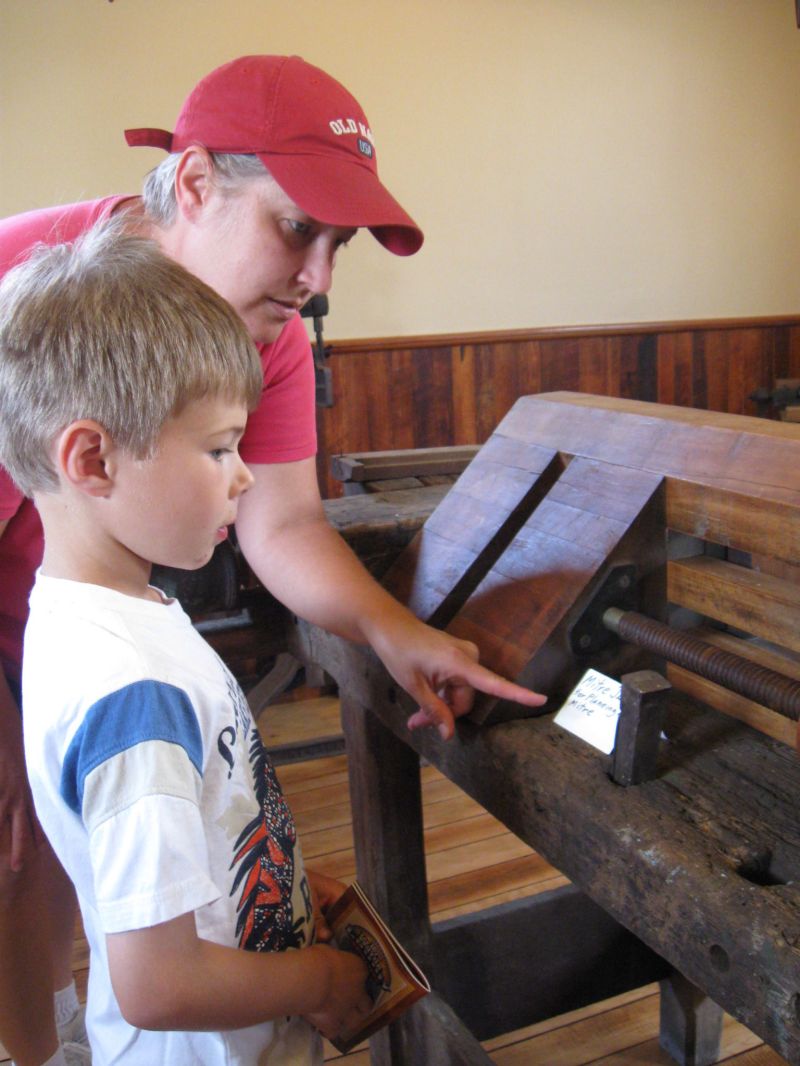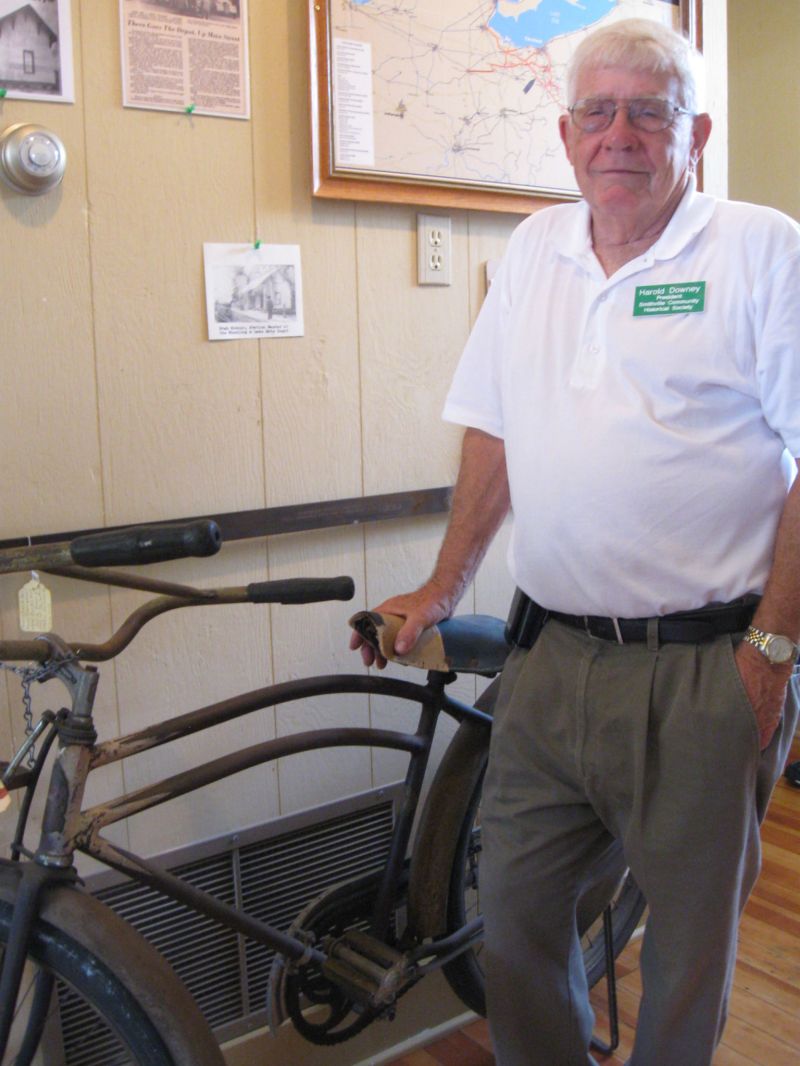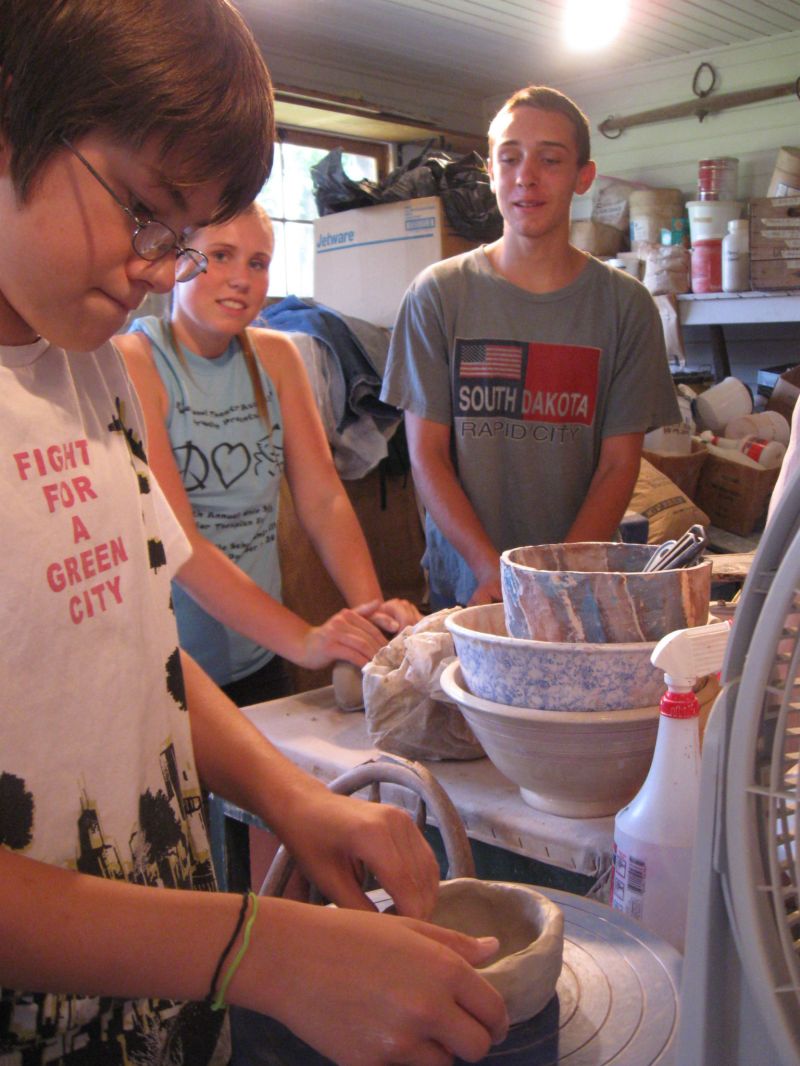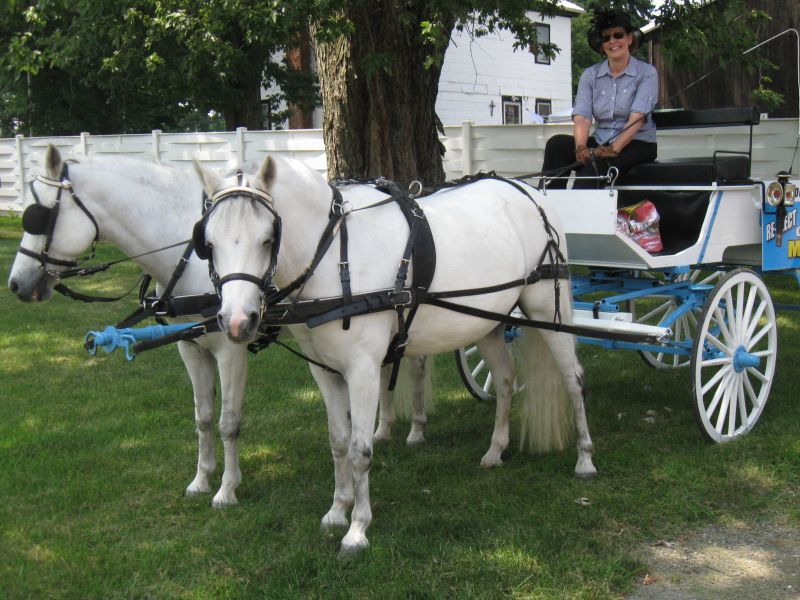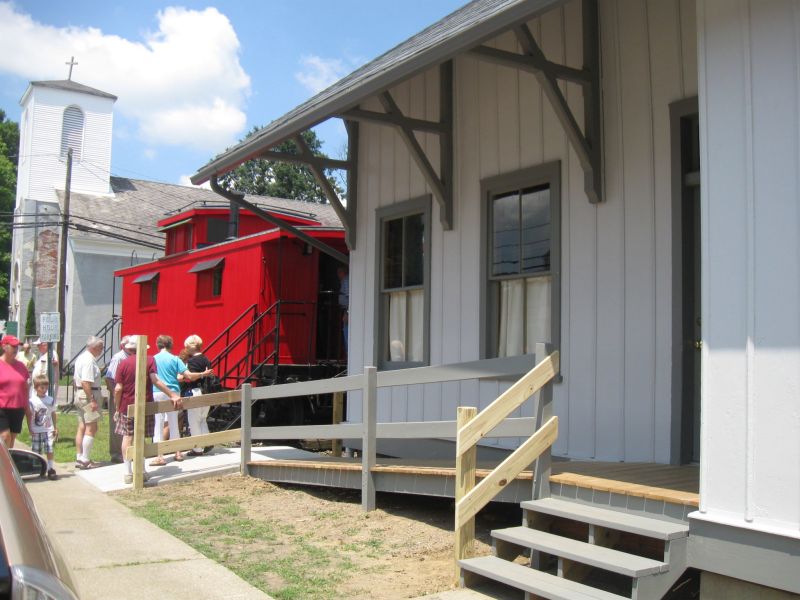0725 Depot and caboose on board for historical journey in Smithville
Summary: The Smithville Community Historical Society?s grand opening on July 17, of its new caboose and depot exhibits drew a large crowd, to see the past of the tiny Wayne County village preserved.
By Robin Hauenstein
Over time, the Smithville Community Historical Society (SCHS) has been acquiring antique exhibit pieces and buildings to add to its small historical village. The newly renovated train station depot and caboose are now part of Smithville?s impressive heritage collection. Sunday, July 17, crowds braved the heat to not only tour the new exhibits but also enjoyed the SCHS open house.
While Carol White Millhoan gave rides in her pony-pulled carriage throughout the village, artisans worked in small workshops and members of the Smithville High School class of 1951 were among those who took in the sights.
Sitting in the cool of the renovated depot, Harold Downey, SCHS president, took time out to explain the recent acquisitions and use of the depot and nearby caboose. The depot, he said, was built in 1882, and was a stop on the Wheeling-Lake Erie railroad. The depot was saved from demolition and moved to its present location in 1975 by Arden Ramseyer, and served as home to several businesses over the years. The SCHS purchased the building from Ramseyer last fall, and while the group had a few pieces of railroad memorabilia, they knew it could not compete with a neighboring town?s collection.
"We didn?t wish to make it into a railroad museum, since Orrville is five miles away and they have a good one there," Downey laughed. Instead, former club president Joe Irvin loaned his antique cabinet-making collection, which is on display in the main room. Irvin and Paul Locher were on hand July 17, to sign copies of their new book on cabinetmaking. All of the equipment in the room is hand- or foot-powered. "There?s some unique pieces of equipment here," Downey pointed out.
With a caboose and depot to renovate, Downey said the group started with the bright red caboose first. "It had to have attention first," he said. "We had no grand master plan. We took advantage of opportunities," he laughed, when it came to renovations and collections on display.
In order to purchase the sites and restore them, the club needed money. It raised $15,000 and then Tyler Feed and Grain Co. offered to give a matching grant of $10,000 if the historical society could raise more. In four weeks, Downey said, the group came back with $11,000 to show the Tylers.
The interior of the decaying caboose was stripped. "There was nothing left," Downey said, so the society members decided since trains and the caboose in particular, were popular with children, they?d put a toy museum inside. "I suspect adults will enjoy it as much, if not more," he said, smiling. Items were moved into the caboose and depot in July, and Downey said the group plans to work on exterior landscaping around both exhibits.
In the next room, the depot housed the ancient bicycle owned by stationmaster Rush Weber, who rode it daily to his job, and also a telegraph machine used in the depot. There is a map of the Wheeling-Lake Erie train routes, and a few other train-related items.
Other buildings in the village include a pioneer cabin from the Shreve area, an 1840 barn moved from outside of town, and reconstructed, a blacksmith forge, pottery in a restored carriage barn, The Mishler Weaving Mill, and the two-story Sheller house, built in 1850. The weaving mill is open year round. Other buildings are open the third Sunday of every month, from 1:30-4 p.m. Across the street from the caboose is the village?s Church of God, which was donated to the society by church members. It?s believed to be the oldest Church of God building in Ohio.
In the rest of the historical village, one of the society?s key items on display in the barn is a well-preserved, monster-sized 1900 thresher built by the Champion Thresher Company of Orrville.
Nita Downey was busy at work, arranging flowers and directing visitors to exhibits. She said the group, which started in 1990, has done quite well in just 21 years, acquiring buildings, artifacts, and revolving exhibits. She noted the Mishler Mill is "very unique to Ohio and this part of the United States." She added the weaving looms are more than 125 years old and are semi-automated.
The historical society boasts around 200 members, and Nita Downey said the diversity in crafts and activities means "we have lots of them (members) with different interests who participate in various activities throughout the year."
The interest expressed by visitors of all ages to the depot, caboose and other buildings was a key indicator that the SCHS is on the right track to preserving and bringing to life area history.

